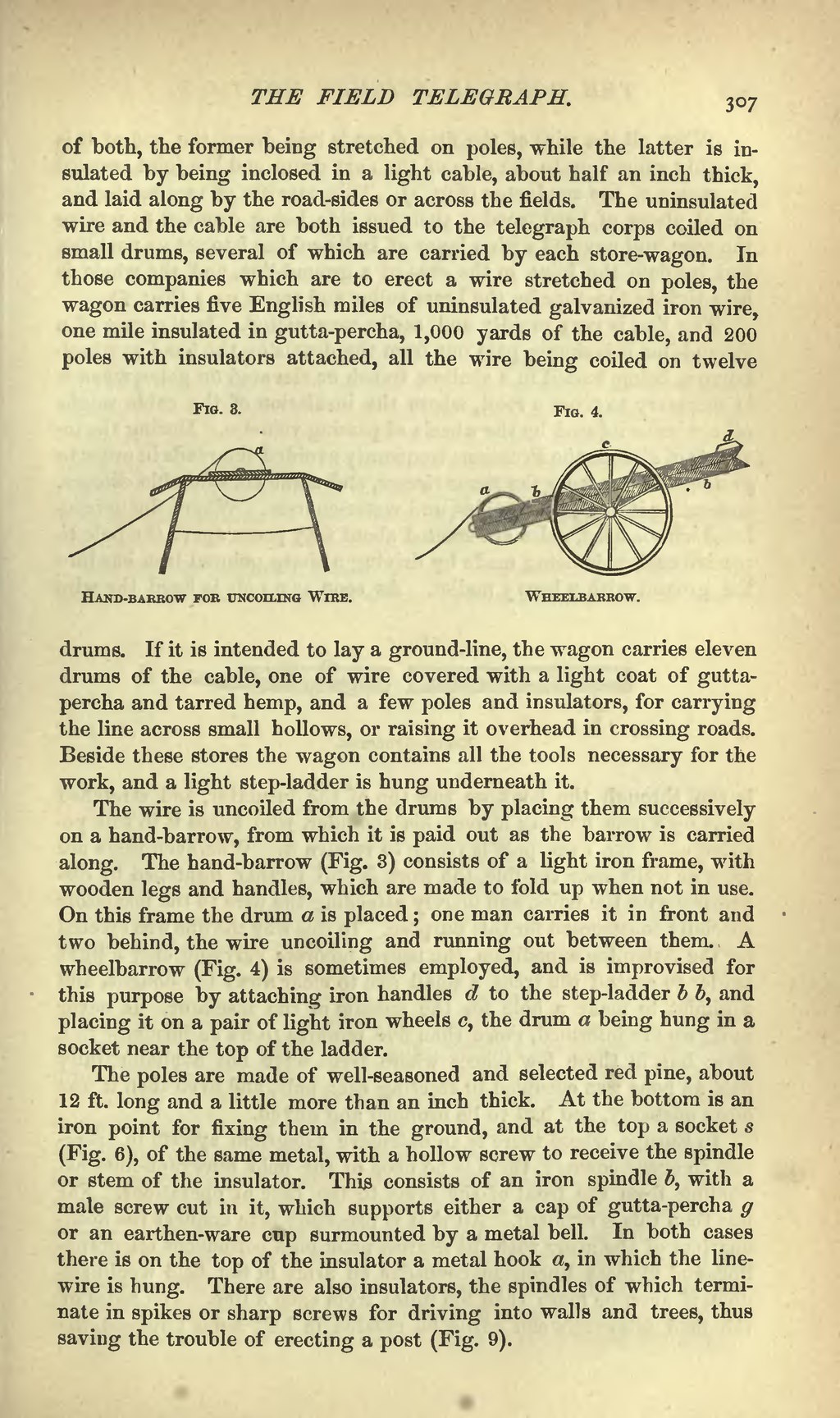of both, the former being stretched on poles, while the latter is insulated by being inclosed in a light cable, about half an inch thick, and laid along by the road-sides or across the fields. The uninsulated wire and the cable are both issued to the telegraph corps coiled on small drums, several of which are carried by each store-wagon. In those companies which are to erect a wire stretched on poles, the wagon carries five English miles of uninsulated galvanized iron wire, one mile insulated in gutta-percha, 1,000 yards of the cable, and 200 poles with insulators attached, all the wire being coiled on twelve
| Fig 3. | Fig. 4. | |
 | ||
| Hand-barrow for uncoiling Wire. | Wheelbarrow. | |
drums. If it is intended to lay a ground-line, the wagon carries eleven drums of the cable, one of wire covered with a light coat of gutta-percha and tarred hemp, and a few poles and insulators, for carrying the line across small hollows, or raising it overhead in crossing roads. Beside these stores the wagon contains all the tools necessary for the work, and a light step-ladder is hung underneath it.
The wire is uncoiled from the drums by placing them successively on a hand-barrow, from which it is paid out as the barrow is carried along. The hand-barrow (Fig. 3) consists of a light iron frame, with wooden legs and handles, which are made to fold up when not in use. On this frame the drum a is placed; one man carries it in front and two behind, the wire uncoiling and running out between them. A wheelbarrow (Fig. 4) is sometimes employed, and is improvised for this purpose by attaching iron handles d to the step-ladder b b, and placing it on a pair of light iron wheels c, the drum a being hung in a socket near the top of the ladder.
The poles are made of well-seasoned and selected red pine, about 12 ft. long and a little more than an inch thick. At the bottom is an iron point for fixing them in the ground, and at the top a socket s (Fig. 6), of the same metal, with a hollow screw to receive the spindle or stem of the insulator. This consists of an iron spindle b, with a male screw cut in it, which supports either a cap of gutta-percha g or an earthen-ware cup surmounted by a metal bell. In both cases there is on the top of the insulator a metal hook a, in which the line-wire is hung. There are also insulators, the spindles of which terminate in spikes or sharp screws for driving into walls and trees, thus saving the trouble of erecting a post (Fig. 9).
